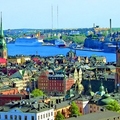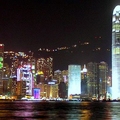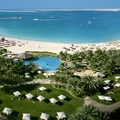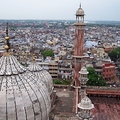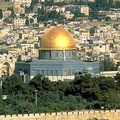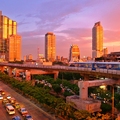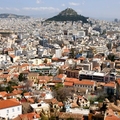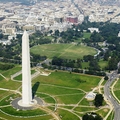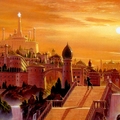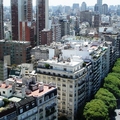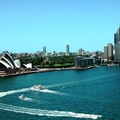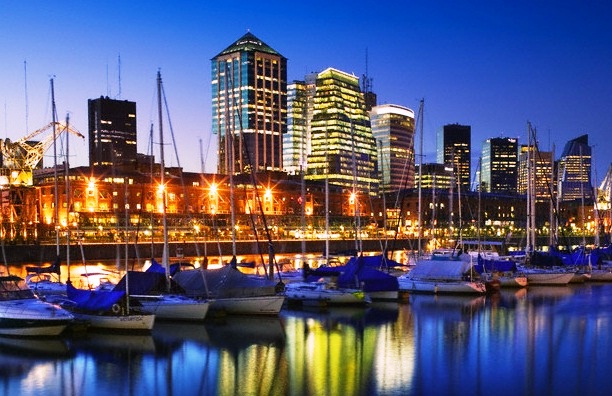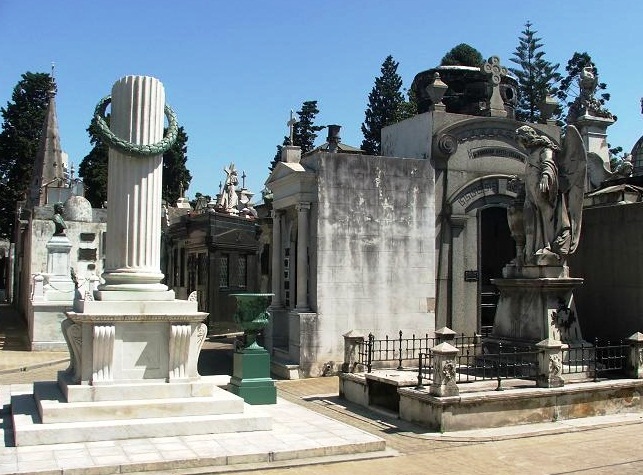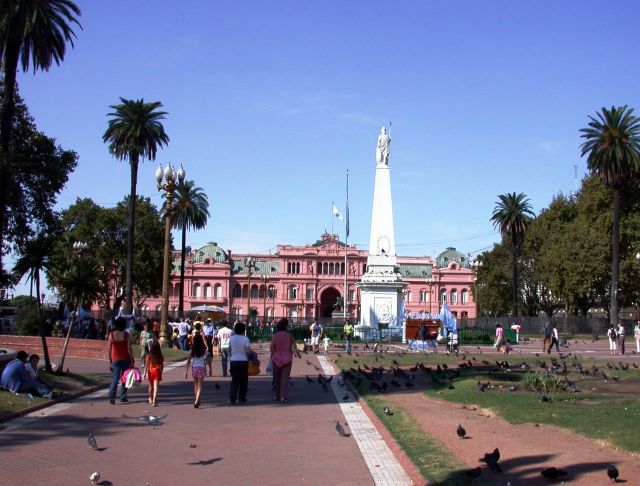Destinations / The best capital cities in the world / Buenos Aires
Ads
Buenos Aires
Sponsored Links
About Buenos Aires
Buenos Aires is a complex, an energetic port city, which stretches from the South to the North of Rio-da –Plata, being the gateway to Argentina for many centuries. The city is the capital of Argentina and a modern metropolitan city with a population of about 11 million inhabitants. The main touristic attractions here are the wide avenues, the wonderful squares, the exciting nightlife and the exclusive restaurants, shops and commercial centres. The physical structure of Buenos Aires is as diverse as its culture. The city does not have any proeminent monuments, no natural monolith, that could serve as a symbol of the city. But Buenos Aires comprises many small places, intimate details, tiny events, each of them with different shade, shape and character. The glass made skyscrapers cast their splender shadows on the 19th century Victorian houses. Plenty of splendid buildings and monuments recall the city’s heyday in the 19th and the beginning of the 20th century when the Europeans emigrated to this prosperous capital. The neighborhoods are small and individualized, each of them with their own colors, forms and characters. The most recent architecture can be seen in the Puerto Madero district where modern skyscrapers tower enchant the visitors’ eyes. Buenos Aires has several enthralling attractions and the best time to visit them is during the day, for aesthetic and safety purposes, and walking is the best way to reach them.
Major attractions in Buenos Aires
Barolo Palace
The works at the Barolo Palace were initiated in 1919 and finished in 1923. The structure is a monumental masterpiece. It has a length of about 42 meters and a width of about 32 meters. The palace includes two exits that take you to two parallel streets: Avenida de Mayo and Hipólito Irigoyen. Commercial shops lined on the pedestrian alley are included between these two streets. The marvelous structure was entirely made of reinforced concrete, which was a unique technique with no precedents in the country at that period of time. The imposing palace was considered the first high building in Buenos Aires, of 100 meters. The palace has on the top a rotating lighthouse that was installed in 1923, of 300,000 spark plugs. The structure was designed by Mario Palanti who combined modern elements, a concrete building, floors dedicated for offices with some bow-windows, and other motives for different moments of the architecture history. The variety of styles and mottos are present because of the severe symbiosis. More surprising is the program that the artist used to organize his work. Palanti worked in an obsessive correspondence with the poetry hierarchies of Dante universe: Pythagoras, Aristoteles, Ovidio, Horacio. The palace is full of analogies and references to the Divina Comedia. Palanti got inspired from the traditions of the Gothic Cathedral, the building being an illustrated scale model of the cosmos. The design of the interior is divided in three main parts like from the Comedia: the Heaven, the Hell and the Purgatory. The building was officially inaugurated in 1923, but Luis Barolo, could not enjoy the completed work. He died earlier. In 1997 the Barolo Palace was recognized officially as National Historic Monument. Few years later, in 2002 it was totally renovated, following the original plans. For a decade the palace was the highest building in Buenos Aires, until the Kavanagh was built, in 1936.
National Government House in the Plaza de Mayo
The Federal Government House is very famous for its magnificent pink color, that’s why sometimes is called the Pink House. The structure is very well- known and appreciated for its statues and lush furnishings. The museum at Yrigoyen 218 houses a treasured collection of personal effects of past presidents. Nowadays the Grenadiers of San Martin in their unique and elegant red and blue uniforms stand to attention around the imposing perimeter. The Casa Rosada, the Pink House of Buenos Aires is situated at the East side of Plaza de Mayo. This amazing presidential palace dates back to the president Sarmiento’s time. The pink salmon color came from Sarmiento’s attempt to make peace between the Federalist and the Unitarists. The pink structure had been the scene of political events, especially during the regime of the notorious Juan and Eva Peron. The Italian style building is designed with palm trees and fountains in the front, and was painted in pink when it was transformed from a Customs and a Post Office building, into a presidential palace. The building houses a small museum in its basement that displays important presidential artifacts. Plaza de Mayo is the main square in the downtown Buenos Aires. The plaza was a witness to many important events in Argentinean history and is surrounded by gorgeous buildings such as the Cabildo, the Cathedral, and offices of the president of the nation. This area has always been the focal point for the political life of Buenos Aires. The present name of the square commemorates the May Revolution of 1810, which started the process of Independence. Opposite to the Casa Rosada on the Plaza de Mayo is the spectacular former of Spanish town hall, the Cabildo, an exclusive colonial building which is fronted by arches that once surrounded the plaza. The guards that are outside are members of the Regimiento de Patricios, formed in 1806, and the changing of guards at every hour is a real popular attraction. The guards still wear their traditional uniforms that had over 200 years. The interior of the building features a museum, which displays captivating architectural relicts, sacred icons and watercolor paintings made by Enrique Pellegrini.
National Congress
The Congress of the Argentine nation is the legislative branch of the Government of the country and it is situated at the end of Avenida de Mayo Street. The immense building was designed by the Italian architect Vittorio Meano Julio Dormal and was constructed between 1898 and 1906. In 1906 was officially inaugurated but also its aesthetic details were not completed since 1946. The local sculptor Lola Mora beautified the interior halls and its exterior with many allegorical bronzes. The time went by and the building seemed to be too small for its purposes and in 1974 the construction of the Annex started. The Annex now housed the offices of the Deputies. The Congressional Plaza was created in front of the building and was designed by Charles Thays, being opened to the public in 1910. The plaza is a very popular attraction among protestors who have something to say about the Congress activities. The National Congress building housed the Legislative Advisory Commission between 1976 to 1983, which was a group of officers from three Armed Forces.
La Manzana de Las Luces
It was constructed by the Jesuits in the early 1880s, prior to their expulsion, and represents a cluster of buildings situated in the Southwest of Plaza de Mayo. The name of the building is a metaphoric expression that refers to the illuminated scholars who used to live within. This was the colonial administrative headquarters for the Jesuits. In 1780 the first School of Medicine was founded here, and later it became the home to the University of Buenos Aires, early in the 19th century.
A huge memorial obelisk-shaped, which is the emblem of the city of Buenos Aires stands in the center of the Plaza de Mayo . Each of its four sides recalls a historical event: the first and the second foundation, the first time when the national flag was hoisted in Buenos Aires, and the declaration of Buenos Aires as the capital of Argentina. The obelisk has a staircase of 206 steps that takes you to an impressive view over the city and over the Avenida 9 de Julio, which is one of the widest avenues in the world. The National Independence was sworn at this square, and today it is a place for social and political events, the meeting point of the Mothers of Plaza de Mayo, who claims the disappearance of their children during the military dictatorship. Puerto Madero is an English style ancient port that is the most excellent gastronomic, cultural and entertainment area nowadays. It is located few blocks from Plaza de Mayo, and its renovated docks feature a perfect promenade for relaxation with a stunning view of the Rio de la Plata river. Here you can visit the museum Fragata Sarmiento, the Corvette Uruguay museum-ship, the “Puente de la Mujer”Women Bridge, the ecological reserve and the complex of restaurants and cinemas.
Famous neighborhoods in Buenos Aires
Recoleta
The prestigious and the elegant neighborhood of Recoleta is very popular for its large parks and squares, and the Recoleta Cemetery, where many famous Argentines, national heroes, and célèbre personalities, lie here in their last resting place, such as Eva Peron. Here you will also find the National Museum of Fine Arts, Recoleta Cultural Center, Buenos Aires Design shopping center which includes a Hard Rock Café and many restaurants and bars; the National Library; the Faculty of Law of the University of Buenos Aires; the Palais de Glace and La Biela Bar. During the weekends the Recoleta Crafts Fair and Artisans’ flea Market that offer street tango shows take place here.
Palermo
The amazing forests of Palermo are located in this residential area, where you will be able to see the Planetarium, the Zoo of Buenos Aires, the Japanese Garden, the Latinoamerican Art Museum of Buenos Aires. Palermo is a large area which includes different sectors, like Palermo Chico, Palermo Viejo and Palermo Hollywood, a sector that is frequently visited for its incredible bars and restaurants, which offer an exciting ambiance.
San Telmo
San Telmo is one of the oldest neighborhoods in Buenos Aires and was the first suburb of colonial Buenos Aires. The wonderful area is famous for its antique dealers, ”tanguerias” tango shows, historic homes and the “Fileteado” decorative and popular art. You can also admire the historical sites from the area, such as Plaza Dorrego, with its unique “Flea Market” opened on Sundays; Lezama Park, where the “Museum of National History” is located, the Penitenciary Museum “Antonio Ballve”; Castagnino’s house; the Russian Orthodox Church designed in a Moscow style.
La Boca
The popular neighborhood of La Boca with its typical colorful venner walls is one of the most favorite touristic attractions. The winding street of “Caminito” named after the famous Argentine tango is nowadays an open air museum which features remarkable paintings, sculptures, and streets performers. The Athletico River Plate Stadium Club, is also known as “El Monumental”. It was firstly founded in the neighborhood of La Boca and now it is situated on the neighborhood of Nunez.
Retiro
Florida street is one of the most favorite streets for walking. Florida pedestrian street is regarded as the most expensive and important commercial area in Argentina. Here the guests will find the Pacific Gallery shopping centre, spectacular with its dome and murals, painted by the most prestigious artists from Argentina. The street ends at the San Martin Square. The bronze statue of General San Martin on horseback is located on the very heart of the square. The marble memorial to the Fallen in the Falklands War can be found on the other side of the park. The Kavanagh building, the first skyscraper in Buenos Aires is just in the front of the square. In this majestic area you can visit the San Martin Palace, the National Railway Museum, the Centre of Historical Studies, the Military Circle. Opposite to the railway station, in the Argentine Air Force Square stands the former British Tower, donated by the British community at the 100th anniversary of the Independence of the country. The area is a truly charming place, with wonderful landmarks, unique landscapes that have to be in your list while in Buenos Aires.
A visit in this cosmopolitan city is a great experience which reserves pleasant moments. These few attractions that we mentioned are just some of the city’s pearls. Do not hesitate to delight yourself with the most wonderful places that reflect the latinoamerican spirit. The picturesque landscapes that the city offer are really notable and delicate and overwhelm every tourist, who loves art and nature.
Sponsored Links
By Eugenia Cvasov
Sponsored Links
Others The best capital cities in the world .
Others from The best capital cities in the world
Is there a person who doesn't like to travel? I think no.
Who doesn't wish for an exciting vacation or who isn't attracted by fascinating experiences? This poll provides comprehensive information about the best, most important capital cities in the world that we generally recommend as wonderful places to explore.
Let them be your starting point and consider these places might occur to you and suit your goals.
These are the most liveable,friendly and multicultural cities on Earth, with the most exciting cultures,with the most beautiful beaches, with the most lively nightlife and the most beautiful scenery.
Explore the cities and find out the best kept secret of each of them.
I'm sure you'll experience senses to the fullest intensity.
Who doesn't wish for an exciting vacation or who isn't attracted by fascinating experiences? This poll provides comprehensive information about the best, most important capital cities in the world that we generally recommend as wonderful places to explore.
Let them be your starting point and consider these places might occur to you and suit your goals.
These are the most liveable,friendly and multicultural cities on Earth, with the most exciting cultures,with the most beautiful beaches, with the most lively nightlife and the most beautiful scenery.
Explore the cities and find out the best kept secret of each of them.
I'm sure you'll experience senses to the fullest intensity.
Images of Buenos Aires, icons, photos, figures, visions, appearances, illustrations, snapshots, captures, canvas and pictures of Buenos Aires - The best capital cities in the world
Sponsored Links
Sponsored Links

